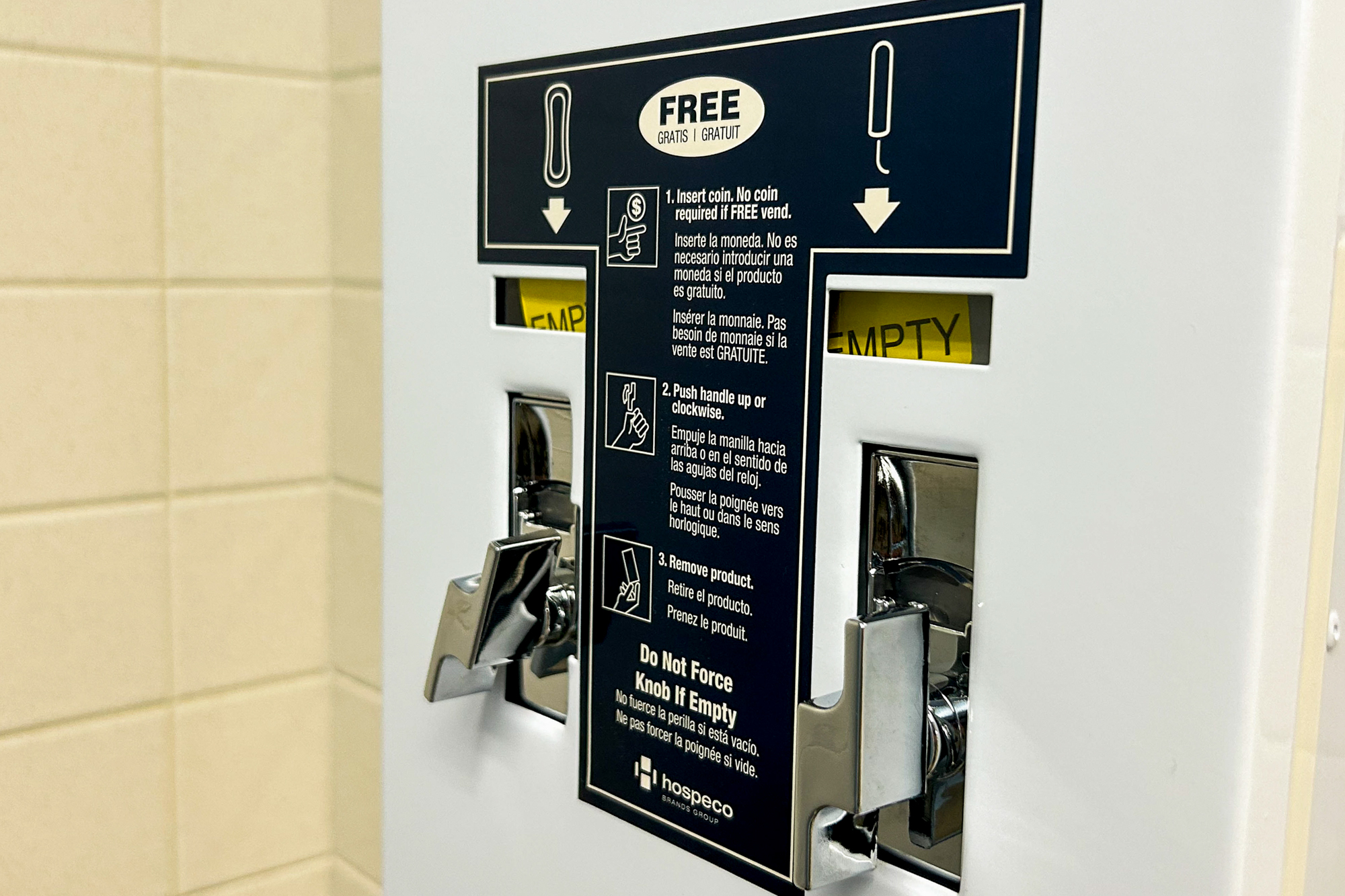Hundreds of dispensers providing free menstrual hygiene products are coming to academic and dorms’ restrooms across the University of Maryland’s campus, bringing an idea that started in fall 2019 as an SGA initiative to life.
More than 400 dispensers are projected to be fully installed in academic buildings by the end of this month. Additional dispensers will come to 103 public access dorm restrooms over the next few months.
The installation is the product of more than three years of work from the organization Get Ovary It, the Student Government Association and the Residence Hall Association. Josie Shaffer, who graduated from this university in 2022 and is a former SGA vice president, helped spearhead the initiative in the SGA in 2020.
The project started as a one-year pilot program that would provide dispensers in 15 bathrooms, totaling $20,000. It was initially denied.
“[The University Facilities Council] didn’t believe that was a facilities improvement,” Shaffer said. “I fought them on the definition of a facilities improvement, because the dispensers that were on campus before my dispensers, they were coin operated, they were broken, they didn’t accept coins, and they were only in the most random bathrooms.”
[Maryland General Assembly considers package of bills to strengthen reproductive rights]
In 2020, the SGA decided to allocate surplus funding to installing 25 dispensers totaling $48,000. The dispensers were installed in summer 2021.
Since the original SGA initiative, the program has taken off. Program funding responsibilities transferred from the SGA to Facilities Management, who coordinated the rollout of the upcoming dispensers.
Sarah Cobau, a junior history and philosophy, politics and economics major who is the SGA’s student affairs director, has been working with Facilities Management on the current round of dispenser installations.
“The conception of feminine hygiene products as … a luxury is rooted inherently in sexism,” Cobau said. “Imagine that every time you went to a bathroom, you had to bring your own toilet paper, right? So I think that it’s a fundamental need.”
Cobau said the installations will continue throughout February, and she hopes all the dispensers in academic building restrooms will be finalized by the end of the month.
The SGA and Facilities Management have also been discussing adding menstrual hygiene product dispensers to non-academic buildings such as Eppley Recreation Center, Cobau said.
RHA President Scott Cronin, a junior government and politics major, has facilitated the purchase and installation of feminine hygiene products in dorm restrooms.
These dispensers, which are projected to be installed by the end of the spring 2023 semester, will be different from the ones in academic buildings, Cronin said. Instead of pressing a button to get a pad or tampon, students can grab as many products as they need — a setup Cronin said has prompted some concern.
“In theory, somebody could walk up and grab every single one of them,” Cronin said. “Some people have concerns about that, and they ultimately said that that was a good thing. Nobody is taking all that stuff unless they need it.”
[UMD SGA’s executive board is all women for the first time in at least 15 years]
RHA is looking at expanding its reach when it comes to menstrual products, including by looking at an initiative to provide hygiene product care packages for students who need them, Cronin said.
For Shaffer, seeing the success of this project at this university is impactful. But she thinks continuing to focus on the next steps is crucial.
“I think every person on campus who menstruates deserves to be able to go to class without worrying,” Shaffer said. “You’re not going to focus on your studies if you’re worried about where your next tampon is coming from.”



